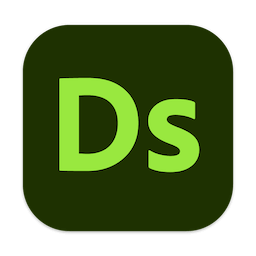


Substance Designer, on the other hand, is a purely "procedural" - node/graph program in which you create materials by pulling pre-built "nodes" from a library, assembling them and modifying them until you have built up an image of something like tree bark of great depth and detail. To use Photoshop, you need to have a basic knowledge of image construction, drawing, painting and manipulation/editing. Photoshop is essentially an image-based painting program that can produce a wide variety of realistic, stylized or painterly materials - which may or may not be seamless. Typically, materials made with Photoshop will appear differently in different rendering engines. This cannot be said of materials made with Photoshop. In fact, they will have the same appearence in any PBR rendering engine - regardless of the identity of the engine (Corona, Arnold, Maxwell Render, Maverick Render, Octane, etc.). I'm going to talk about Substance Designer only, not Substance Painter, which is a totally different application - assuming that Substance Designer versus Photoshop is the core of the original question.Ī quick answer to the question is that the essential difference between Substance Designer and Photoshop is that Substance Designer produces materials that are "photo-realistic" and will appear to be "photo-realistic" in all "photorealistic rendering engines ("PBR").
#SUBSTANCE 3D DESIGNER CRACK#
So, I'd like to take a crack at answering this question. OK, I am a long-time Maya model-builder who has used Photoshop(for a long, long time) and Substance Designer for about as long as it has been in existence, and who has written tutorials for both. I also still use Photoshop every day so like I said each tool is useful for its specific purposes. I purchased a copy of both when they were still perpetual, probably some of the best 2 tools I own and I use them every day. That's just the basics really but Substance tools are great for automation, PBR workflow, optimization, the list is extensive.Ĭheck a few youtube videos if you haven't used it before and decide for yourself since you already know Photoshop so you have an understanding of how it compares. The benefits of Designer/Painter is that you are working in 3D while making/painting your textures. Painter has the ability to bring in your Designer materials since they are both made originally by the same company.
#SUBSTANCE 3D DESIGNER SOFTWARE#
I think Substance Painter should be also on your list of software to learn since that comes with great tools for baking (occlusion/normal/heights) etc. Photoshop is for painting, Designer is for procedural creation (like any node software) for materials/textures. To be clear: these are filetypes that are exported from Substance 3D Designer and can be imported into some, or all other Substance 3D applications.Both are useful in their own way. The application and its ecosystem use 4 different filetypes. This allows you to add endless control and variation to just a single asset. Parametric: you can set-up to control nearly any aspect of a texture through a single slider or dropdown.

You no longer have to perform baking in a separate software and perform lengthy import and export processes. Integrated Baking: access advanced, blazing-fast mesh baking tools right inside the software.It becomes much quicker to iterate and experiment, finding even more efficient workflows. Non-destructive: you can reverse any action without losing any of your work.No more need to separately author maps such as Basecolor, Roughness, Normal, etc. Edit one mask or slider, and automatically any connected output is re-calculated. Non-linear: you can can author a multitude of texture outputs at once.The workflow is further explained on dedicated pages, but the following are benefits of working with the software: Substance 3D Designer is a Node-based editor that allows you to build content in many different ways with varying complexities.

Things like Brush Alphas, Generators, Filters and Base Materials can all be authored in Designer. For example, most of the procedural, smart content in Painter and Sampler was authored and exported from Designer. It means you are not limited to a single type of output (such as a unique material/set of textures for a UV-mapped mesh), but can create content for a much more extended set of uses. It allows you to author content for almost any usecase or scenario. In short, Substance 3D Designer should be seen as the most technical, advanced texturing application available.


 0 kommentar(er)
0 kommentar(er)
